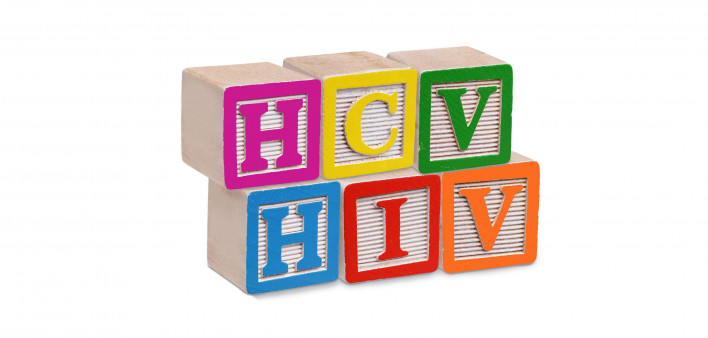Young adults born with HIV and hepatitis C virus (HCV) can be cured of hep C with direct-acting antivirals (DAAs), according to a report last week at the 10th International AIDS Society Conference on HIV Science in Mexico City.
However, by the time they are treated for HCV, many have already developed advanced liver disease that puts them at risk for liver cancer and liver failure. These findings show that speeding up access to newer DAAs for pediatric patients is “an urgent need,” said presenter Itzíar Carrasco of Hospital General Universitario Gregorio Marañon in Madrid.
An estimated 11 million people with hepatitis C worldwide are younger than 15, including 5 million with active infection, Carrasco noted as background. Most were infected through vertical, or mother-to-child transmission during gestation or delivery. HIV and HCV have overlapping routes of transmission, and many people have both viruses.
Around 80% of children with vertically acquired HCV develop chronic infection rather than clearing the virus naturally, according to Carrasco. Over years or decades, chronic hepatitis C can lead to advanced liver fibrosis (accumulation of scar tissue), cirrhosis (severe scarring that compromises liver function), hepatocellular carcinoma (the most common type of liver cancer) and liver failure that may necessitate a transplant. Some studies suggest that cirrhosis develops more rapidly in children with HCV. Coinfection with HIV can lead to a greater likelihood of HCV persistence and more aggressive liver disease progression. In addition, both viruses can cause chronic inflammation and immune activation that contribute to a variety of health problems.
The advent of direct-acting antivirals starting in late 2013 revolutionized the treatment of hepatitis C. Almost all adults—including those living with HIV—can now be cured with well-tolerated medications taken for two to three months. Yet the approval of these drugs for pediatric patients is lagging.
In 2017, the Food and Drug Administration (FDA) approved Harvoni (sofosbuvir/ledipasvir) for adolescents ages 12 to 17 with HCV genotypes 1, 4, 5 and 6, and Sovaldi (sofosbuvir) plus ribavirin for those with genotypes 2 or 3. Studies have shown that Harvoni is also highly effective for children ages 6 to 11 and those ages 3 to 5. Mavyret (glecaprevir/pibrentasvir), a pangenotypic medication that works against all genotypes of HCV, was approved for adolescents age 12 and older this past April. However, no DAAs are currently approved for children under 12.
Carrasco’s team looked at response to DAA treatment among young adults with vertically transmitted HIV and HCV who were members of the Spanish National Cohort of Pediatric Patients with HIV (CoRISpe) and continued follow-up after transitioning to adult care. Thanks to effective antiretroviral therapy, vertical transmission of HIV has become rare in Spain, and most vertically infected individuals are now adolescents and young adults.
The researchers identified 27 people who received hepatitis C treatment. Just over half were young women, and the median age was 23 years. At the time of HCV treatment initiation, all were on antiretroviral therapy using a wide variety of regimens. Most (88%) had undetectable HIV viral load, and the median CD4 cell count was 618. A majority (63%) had HCV genotype 1, followed by genotype 4 (33%) and genotype 3 (4%). At treatment initiation, 26% already had advanced fibrosis (stage F3) and 4% had cirrhosis (F4), while 15% had moderate fibrosis (F2) and 56% had mild or absent fibrosis (F0-F1).
Twenty-one people were treated for the first time with DAAs, while six had previously undergone treatment with the older and less effective interferon-based therapy. Fifteen were treated with Harvoni, while the remainder used a variety of other regimens. All of the participants achieved sustained virological response (SVR), or undetectable HCV at 12 weeks after finishing treatment, which is considered a cure.
Despite successful treatment, most did not see improvement in their liver disease status, according to elastography, a method used to measure liver stiffness, a hallmark of fibrosis and cirrhosis. Although 29% showed improvement, 57% stayed the same and 14% had worsening fibrosis.
These findings underscore the importance of treating children with hepatitis C early, before they develop advanced liver disease. Current HCV treatment guidelines state that if DAA regimens are available for a child’s age group, “treatment is recommended for all HCV-infected children older than 3 years as they will benefit from antiviral therapy, independent of disease severity.” Because this is not yet the case, the guidelines add that treatment of children ages 3 to 11 should be deferred until interferon-free DAA regimens are available. “It is anticipated that additional safe and effective DAA regimens will be available for children aged 3 through 11 in the near future,” the guidelines authors predict.
Click here to read the study abstract.







Comments
Comments